Significant sensitivity increases provides 30% more polar metabolites quantified in plasma
With the SCIEX Triple Quad 7500 system
Robert Proos, Darren Dumlao, Kranthi Chebrolu, Christie Hunter
SCIEX, USA
Abstract
A targeted MRM assay was developed to compare the performance between the QTRAP 6500+ system and the SCIEX 7500 Ssystem. The higher sensitivity of the SCIEX 7500 system provided a ~30% increase in the number of metabolites quantified in plasma, with a 25% increase in positive mode, and a 41% increase in negative mode. To confirm these results, the comparison was repeated on two other instrument sets, all three instrument sets showed significant improvements in S/N for a large number of metabolites.
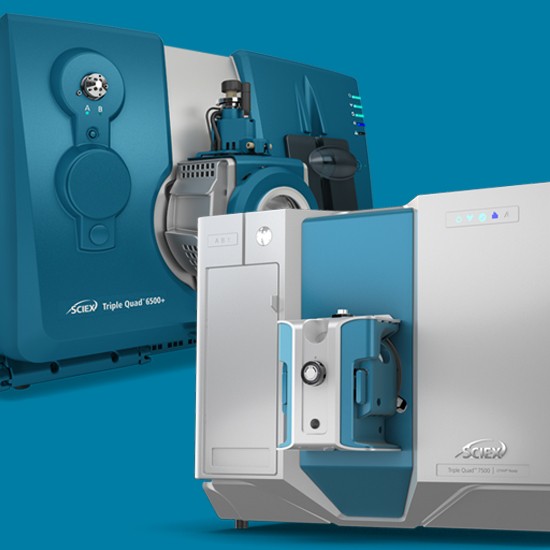
Introduction
Studying the impact of biological perturbations on the metabolome requires high sensitivity and specificity, as well as the ability to multiplex large numbers of known metabolites in a single assay. The utility of LC-MS/MS analysis for the quantification of metabolites from biological samples has become widely accepted as the key analytical solution due to the aforementioned requirements.1
In addition to very good sensitivity and specificity, targeted analysis using multiple reaction monitoring (MRM) on triple quadrupole MS systems has the advantage of throughput and simplified data processing. By focusing on known important metabolites that are key to biology, quantitative results provide key biological insights. These platforms are capable of fast polarity switching, allowing a broad range of analytes to be interrogated in a single injection. Finally, because of broad dynamic range typically required for biological samples, high sensitivity is a critical attribute of the LC-MS system for the analytes with needing lower detection limits that were previously undetectable and for smaller sample sizes.
A targeted LC-MS/MS assay with MRM transitions for over 450 metabolites was used to assess the impact of added sensitivity on the detection and quantification of metabolites in plasma. Using a generic reversed-phase chromatography method and operating the MS systems in both positive and negative polarity modes to obtain broad coverage, a similar method was run on three separate QTRAP 6500+ systems and as well as three separate SCIEX 7500 systems under independent lab settings.
Figure 1. Increased sensitivity on the SCIEX 7500 system improved the number of metabolites detected. A similar analysis was run on both the QTRAP® 6500+ system and the SCIEX 7500 system was performed. The SCIEX 7500 system showed a 25% increase in metabolite detected was observed in positive ion mode, and a 41% increase was observed in negative mode. Note some metabolites were detected in both polarities and thus the overall gain in detected metabolites was 30%.
Key features of the SCIEX 7500 system for quantification of polar metabolites
- Provides significant gains in sensitivity though increased generation, capture, and transmission of ions with the:
- OptiFlow Pro ion source with E Lens probe and the D Jet ion guide2
- NIST SRM 1950 plasma was used as reference material to compare platforms
- Higher sensitivity and S/N on the SCIEX 7500 system yielded large improvements in detected, quantifiable of metabolites- up to 30% more vs the QTRAP 6500+ system (Figure 1)
- Targeted assay is provided, complete with a standard operating protocol, an MRM list, and tools to facilitate method development (sMRM Builder template) can also integrate internal standard kits if required.3
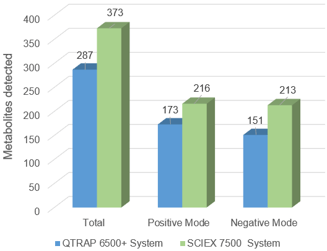 Click to enlarge
Click to enlarge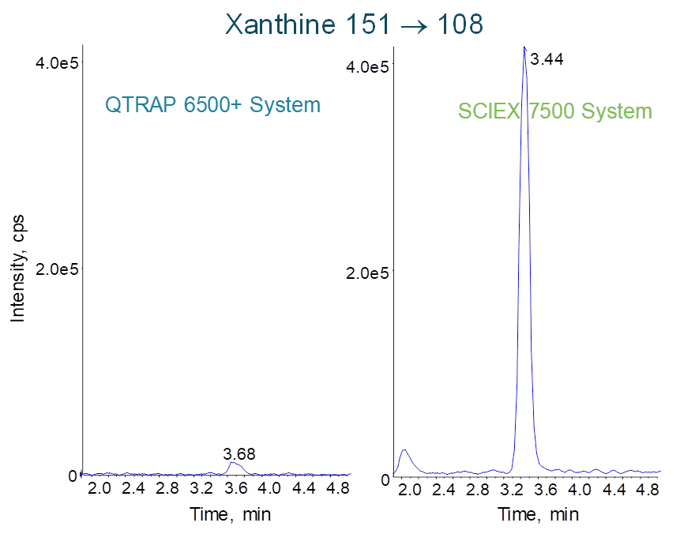 Click to enlarge
Click to enlarge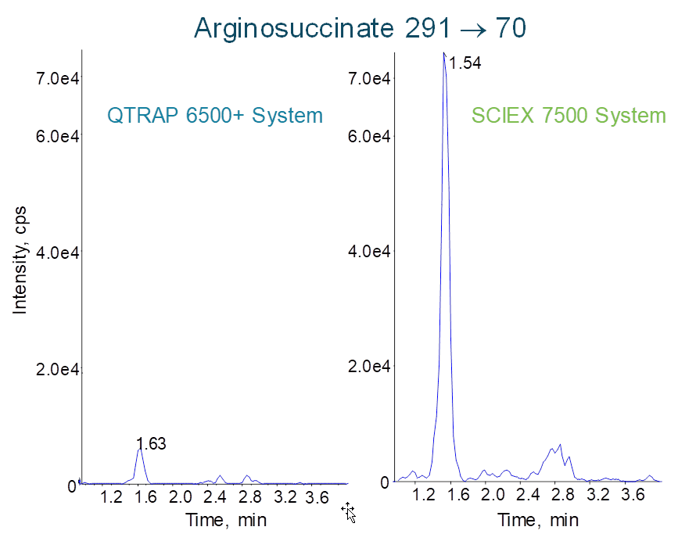 Click to enlarge
Click to enlarge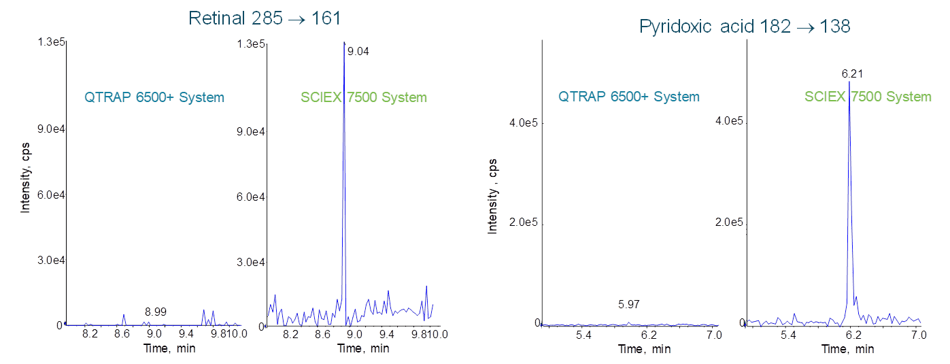 Click to enlarge
Click to enlarge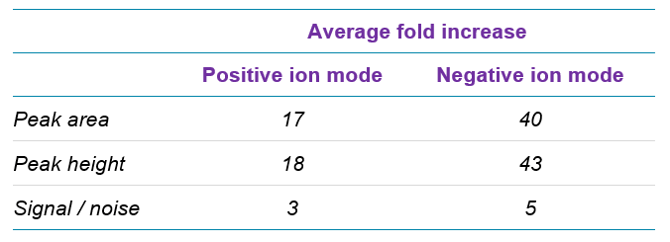 Click to enlarge
Click to enlarge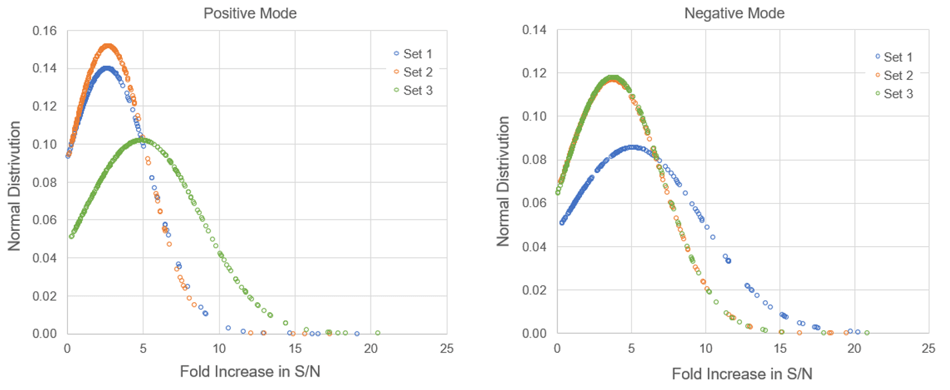 Click to enlarge
Click to enlarge